I’m looking for education in
Clinical Topic



Webcast
1.00 CME
Building Bridges Between Treatment Centers and Community Practices


Webcast
1.00 AMA PRA
Severe Asthma Bridge
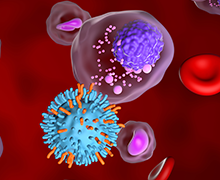

Webcast
1.00 AMA PRA
CAR T-cell Therapy in MM


Webcast
1.00 CME
Game On


Webcast
1.50 AMA PRA
Staying in the Lead
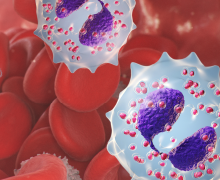
Webcast
1.50 AMA PRA
From Delay to Damage

Monograph
2.00 ACPE
Pharmacists at the Frontline of HIV Prevention
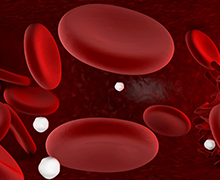

1.25 CME/CE
On Track for Change


Webcast
1.00 AMA PRA
Top 10 Questions From The Community

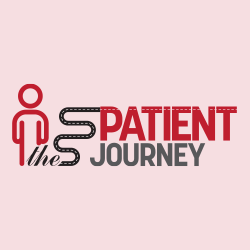
Webcast
1.00 AMA PRA
Finding the Path in Idiopathic Hypersomnia:

Webcast
1.25 CME/CE
Shining a Light



2.50
AMA PRA
HIV Prevention Strength Training


Webcast
1.00 CME
Finding the Path in Nonadvanced Systemic Mastocytosis
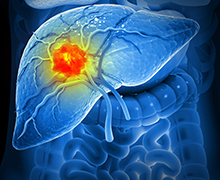

Webcast Series
0.75
CME/CE
Team at the Center

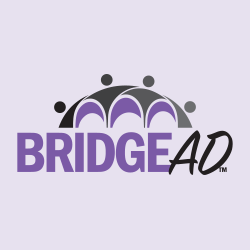
1.00 AMA PRA
BRIDGE AD 2025

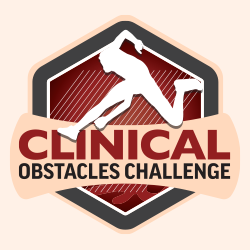
Webcast
1.00 AMA PRA
Clearing the Hurdles in Chronic Rhinosinusitis With Nasal Polyps:


Webcast Series
1.00
CME/CE
Answers to Everyday Challenges in PrEP Practice

Webcast Series
1.25
AMA PRA
An Ounce of Prevention


eHealthSource
2.00
AMA PRA
Covering the Span of Primary Care Educational Needs in PrEP Implementation


1.00 CME/CE
Finding the Path in EGPA


1.00 MOC/CME/ANCC
Overcoming Obstacles to MASH Diagnosis and Management


Webcast
2.00
CME/CE
Answers to Everyday Practice Challenges in HIV Medicine: Volume 3 - A Phone-a-Friend Peer Consult Series


Webcast
1.50 CME/CE
Interleukin-33 and Lower Tract Respiratory Diseases
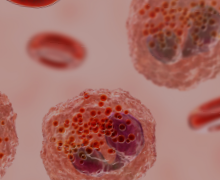

1.50 AMA PRA
Turning the Tide on Eosinophilic Granulomatosis With Polyangiitis


Multi-Part Activity
1.00
CME/CE
Targeted Workouts: Building Skills in Management of Unique HIV Populations


Webcast
1.00 AMA PRA
Can You Master MASH Diagnosis and Management?


Webcast Series
1.50
CME/CE
Hot Topics in Systemic Lupus Erythematosus

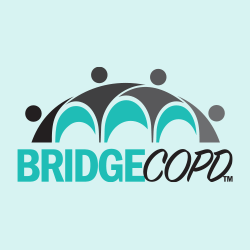
Webcast
1.00 AMA PRA
Building Bridges with Community Health Centers to Improve COPD Outcomes


Webcast
1.50 CME/CE
Managing Nonadvanced Systemic Mastocytosis

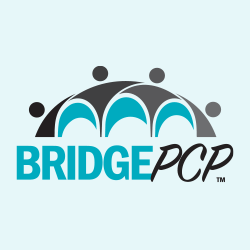
Webcast
1.00 CME/CE
BRIDGE PCP: Building Bridges to Improve Care Delivery and Close Gaps in Primary Care Practice - HIV and PrEP Edition


1.00 CME/CE
Exploring the Spectrum of Virologic Failure in HIV


1.00 CME/CE
Combating Common Cardiometabolic Comorbidities in Aging People with HIV

Webcast
1.00 AMA PRA
Epithelial Cytokines and Chronic Airway Diseases

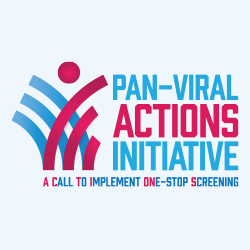
Webcast
1.00 CME/CE
Pan-Viral ACTIONS Initiative

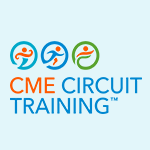
2.50
MOC/CME/ANCC
PBC Powerlifting


1.00 CME/CE
The LAI PrEP Journey


Webcast
1.25 CME/CE
BRIDGE PCP: Building Bridges to Improve Care Delivery and Close Gaps in Healthcare Equity in Primary Care Practice


2.50
CME/AANP
Obesity Management in the GLP-1–RA Era


Webcast
1.00 CME/CE
Overcoming Obstacles to LAI ART Implementation


Webcast
1.25 CME/CE
Comprehensive Case Challenges in MASH
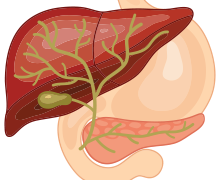

eHealthSource
1.00 MOC/CME/ANCC
Primary Biliary Cholangitis



Webcast
1.00 CME
Building Bridges Between Treatment Centers and Community Practices
Reducing Knowledge Gaps in the Management of Systemic Mastocytosis - East Region
| Faculty: | Prithviraj Bose, MD; Matthew P. Giannetti, MD |
| Release: | 12/19/2025 |
| Expiration: | 12/19/2026 |


Webcast
1.00 AMA PRA
Severe Asthma Bridge
Improving Clinical Outcomes For Patients with Severe or Uncontrolled Asthma
| Faculty: | Krystal Cleven, MD, MS; Mauli B. Desai, MD; Anand Kumthekar, MD, RhMSUS - Content Reviewer/Course Director |
| Release: | 12/12/2025 |
| Expiration: | 01/12/2026 |


Webcast
1.00 AMA PRA
CAR T-cell Therapy in MM
Dialogue Between a MM Expert and a Community Oncologist
| Faculty: | Krina K. Patel, MD, MSc; Amanda Bucheit, MD |
| Release: | 12/05/2025 |
| Expiration: | 12/05/2026 |


Webcast
1.00 CME
Game On
Advancing Care in Nonadvanced Systemic Mastocytosis
| Faculty: | Matthew P. Giannetti, MD ; Anne L. Maitland, MD, PhD; Tsewang Tashi, MD |
| Release: | 12/05/2025 |
| Expiration: | 12/05/2026 |


Webcast
1.50 AMA PRA
Staying in the Lead
Navigating the Changing Course of Sickle Cell Disease Management
| Faculty: | Lakiea Bailey, PhD; Modupe Idowu, MD; Nirmish Shah, MD |
| Release: | 12/05/2025 |
| Expiration: | 01/09/2026 |

Webcast
1.50 AMA PRA
From Delay to Damage
Changing the EGPA Trajectory With Early Diagnosis and Biologic Therapy
| Faculty: | Brian D. Jaros, MD; Philip Seo, MD, MHS; Michael E. Wechsler, MD, MMSc |
| Release: | 12/04/2025 |
| Expiration: | 12/04/2026 |

Monograph
2.00 ACPE
Pharmacists at the Frontline of HIV Prevention
A Guide to Expanding Access to PEP and PrEP
| Faculty: | Josh Havens, PharmD; Arsalan "RC" Shah, PharmD, MBA |
| Release: | 12/03/2025 |
| Expiration: | 12/03/2026 |


1.25 CME/CE
On Track for Change
Are You on Pace With the Evolving Treatment Landscape in SCD?
| Faculty: | Modupe Idowu, MD; Santosh L. Saraf, MD; India Sisler, MD |
| Release: | 11/17/2025 |
| Expiration: | 11/17/2026 |


Webcast
1.00 AMA PRA
Top 10 Questions From The Community
Optimizing Management of Myelodepletive Myelofibrosis
| Faculty: | Andrew Kuykendall, MD |
| Release: | 11/05/2025 |
| Expiration: | 11/05/2026 |


Webcast
1.00 AMA PRA
Finding the Path in Idiopathic Hypersomnia:
Best Practices in Diagnosis and Management
| Faculty: | Anne Marie Morse, DO, FAASM; Haley Wall |
| Release: | 10/29/2025 |
| Expiration: | 10/29/2026 |

Webcast
1.25 CME/CE
Shining a Light
on the PCP’s Role in HIV Prevention
| Faculty: | Shauna Applin, A-NP, AAHIVs |
| Release: | 10/27/2025 |
| Expiration: | 10/27/2026 |



2.50 AMA PRA
HIV Prevention Strength Training
| Course 1: | HIV Prevention in OB/GYN Care |
| Course 2: | HIV Prevention Belongs in Pediatric Care |


Webcast
1.00 CME
Finding the Path in Nonadvanced Systemic Mastocytosis
Best Practices in Recognition and Management
| Faculty: | John M. Fahrenholz, MD |
| Release: | 10/03/2025 |
| Expiration: | 10/03/2026 |


Webcast Series
0.75 CME/CE
Team at the Center
| Course 1: | Management of newly diagnosed patient with intermediate-stage HCC |
| Course 2: | Management of patients with intermediate-stage HCC who progressed after a partial response to TACE therapy |
| Course 3: | Management of a patient with intermediate-stage HCC who has experienced a TRAE |


1.00 AMA PRA
BRIDGE AD 2025
Building BRidges to BrIng AntiamyloiD Monoclonal Antibodies to EliGible PatiEnts With Alzheimer’s Disease
| Faculty: | Lawrence S. Honig, MD, PhD; David C. Weisman, MD |
| Release: | 09/10/2025 |
| Expiration: | 09/10/2026 |


Webcast
1.00 AMA PRA
Clearing the Hurdles in Chronic Rhinosinusitis With Nasal Polyps:
Overcoming Barriers to Biologic-Based Therapy
| Faculty: | Kathleen M. Buchheit, MD; Joseph K. Han, MD, FARS, FAAOA |
| Release: | 09/01/2025 |
| Expiration: | 09/01/2026 |


Webcast Series
1.00 CME/CE
Answers to Everyday Challenges in PrEP Practice
| Course 1: | Managing PrEP Regimen Changes to Meet Patient Lifestyle Needs |
| Course 2: | Overcoming Challenges to PrEP Initiation and Retention |
| Course 3: | Optimizing LAI PrEP Implementation Models |
| Course 4: | What’s New in PrEP? |

Webcast Series
1.25 AMA PRA
An Ounce of Prevention
| Course 1: | Hemophilia and the Coagulation Cascade |
| Course 2: | Individualized Nonfactor Therapy for Hemophilia |


eHealthSource
2.00 AMA PRA
Covering the Span of Primary Care Educational Needs in PrEP Implementation
| Course 1: | PrEP Toolkit for PCPs |
| Course 2: | PrEP 201 |


1.00 CME/CE
Finding the Path in EGPA
Diagnostic and Therapeutic Best Practices
| Faculty: | Anisha B. Dua, MD, MPH; Michael E. Wechsler, MD, MMSc |
| Release: | 07/30/2025 |
| Expiration: | 07/30/2026 |


1.00 MOC/CME/ANCC
Overcoming Obstacles to MASH Diagnosis and Management
A Clinical Obstacles Challenge
| Faculty: | Naim Alkhouri, MD, FAASLD, DABOM |
| Release: | 06/30/2025 |
| Expiration: | 06/30/2026 |


Webcast
2.00 CME/CE
Answers to Everyday Practice Challenges in HIV Medicine: Volume 3 - A Phone-a-Friend Peer Consult Series
| Course 1: | Evolving Best Practices for LAI Implementation |
| Course 2: | Addressing Weight Gain in People With HIV in the GLP-1 RA Era |
| Course 3: | The Future of ART: Broadly Neutralizing Antibodies (bNabs) and 2-Drug Regimens |
| Course 4: | Devising Subsequent ART for Heavily Treatment-Experienced Patients |
| Course 5: | Optimizing Care for Adolescents and Young Adults With HIV |
| Course 6: | Intersection of HIV Treatment and Harm Reduction in People With SUD |
| Course 7: | Depression in People with HIV |
| Course 8: | Cancer Screening in People With HIV |


Webcast
1.50 CME/CE
Interleukin-33 and Lower Tract Respiratory Diseases
Moving From Pathophysiology to Management
| Faculty: | Jonathan M. Hand, MD; Professor Tom Wilkinson MA Cantab MBBS PhD FRCP FERS; Professor Dave Singh MD, FERS, FBPhS |
| Release: | 06/23/2025 |
| Expiration: | 06/23/2026 |


1.50 AMA PRA
Turning the Tide on Eosinophilic Granulomatosis With Polyangiitis
New Targeted Strategies to Reduce Disease Burdens
| Faculty: | Michael E. Wechsler, MD, MMSc; Praveen Akuthota, MD; Anisha B. Dua, MD, MPH; Jason M. Springer, MD |
| Release: | 06/20/2025 |
| Expiration: | 06/20/2026 |


Multi-Part Activity
1.00 CME/CE
Targeted Workouts: Building Skills in Management of Unique HIV Populations
| Course 1: | Incorporating Trauma-Informed Care into HIV Practices |
| Course 2: | Addressing Mental Health Challenges in People With HIV |
| Course 3: | Improving Equitable Care for People With HIV Experiencing Homelessness |
| Course 4: | Overcoming Challenges in People With HIV and Substance Use Disorder |


Webcast
1.00 AMA PRA
Can You Master MASH Diagnosis and Management?
A CME Jeopardy™ Activity
| Faculty: | Sonal Kumar, MD, MPH; Mazen Noureddin, MD, MHSc; Kymberly D. Watt, MD |
| Release: | 06/04/2025 |
| Expiration: | 06/04/2026 |


Webcast Series
1.50 CME/CE
Hot Topics in Systemic Lupus Erythematosus
| Course 1: | An Overview of New ACR Lupus Clinical Practice Guidelines |
| Course 2: | ACR Guidelines on New Treatment Paradigms for SLE |
| Course 3: | ACR Lupus Guidelines and Comprehensive Patient Management |


Webcast
1.00 AMA PRA
Building Bridges with Community Health Centers to Improve COPD Outcomes
Building Bridges with Community Health Centers to Improve COPD Outcomes
| Faculty: | Sarah Sungurlu, DO; T. S. Dharmarajan, MD, MACP ; Anand Kumthekar, MD, RhMSUS - Content Reviewer/Course Director |
| Release: | 05/19/2025 |
| Expiration: | 05/19/2026 |


Webcast
1.50 CME/CE
Managing Nonadvanced Systemic Mastocytosis
An Expert Roundtable Session
| Faculty: | Anton Rets, MD; Matthew P. Giannetti, MD ; Lauren M. Madigan, MD |
| Release: | 05/09/2025 |
| Expiration: | 05/09/2026 |


Webcast
1.00 CME/CE
BRIDGE PCP: Building Bridges to Improve Care Delivery and Close Gaps in Primary Care Practice - HIV and PrEP Edition
A BRIDGE PCP Webcast
| Faculty: | Robert S. Beil, MD, AAHIVS ; Barry S. Zingman, MD |
| Release: | 04/17/2025 |
| Expiration: | 04/17/2026 |


1.00 CME/CE
Exploring the Spectrum of Virologic Failure in HIV
From Resistance Testing to Heavily Treatment-Experienced Patients
| Faculty: | Eric S. Daar, MD |
| Release: | 04/11/2025 |
| Expiration: | 04/11/2026 |


1.00 CME/CE
Combating Common Cardiometabolic Comorbidities in Aging People with HIV
A Clinical Obstacles Challenge
| Faculty: | Laura Waters, MD, FRCP |
| Release: | 04/01/2025 |
| Expiration: | 04/01/2026 |

Webcast
1.00 AMA PRA
Epithelial Cytokines and Chronic Airway Diseases
A Closer Look at Chronic Rhinosinusitis With Nasal Polyps
| Faculty: | Kathleen M. Buchheit, MD; Joseph K. Han, MD, FARS, FAAOA; Flavia Hoyte, MD |
| Release: | 04/01/2025 |
| Expiration: | 04/01/2026 |


Webcast
1.00 CME/CE
Pan-Viral ACTIONS Initiative
A Call to Implement One-Stop Screening for HIV, HCV & HBV
| Faculty: | Stacey B. Trooskin, MD, PhD, MPH |
| Release: | 03/26/2025 |
| Expiration: | 03/26/2026 |


2.50 MOC/CME/ANCC
PBC Powerlifting
| Course 1: | Activity 1: Are You Missing PBC? |
| Course 2: | Activity 2: A Complete Guide to PBC Disease and Symptom Management |
| Course 3: | Activity 3: Testing Your Fitness with New Treatment Options in PBC Practice |


1.00 CME/CE
The LAI PrEP Journey
Empowering Patients in HIV Prevention
| Faculty: | Josh Havens, PharmD; Aniruddha (Anu) Hazra, MD |
| Release: | 03/18/2025 |
| Expiration: | 03/18/2026 |


Webcast
1.25 CME/CE
BRIDGE PCP: Building Bridges to Improve Care Delivery and Close Gaps in Healthcare Equity in Primary Care Practice
Cancer Screening Edition
| Faculty: | Carmen E. Guerra, MD, MSCE, FACP; Una T. Hopkins, DNP, RN, FNP-BC, NE-BC, FACCC; Alyson Moadel-Robblee, PhD |
| Release: | 03/05/2025 |
| Expiration: | 03/05/2026 |


2.50 CME/AANP
Obesity Management in the GLP-1–RA Era
| Course 1: | Recognizing Obesity as a Chronic Disease |
| Course 2: | Discussing Obesity and Obesity Medication with Patients |
| Course 3: | Optimizing Pharmacologic Options for Obesity Management |
| Course 4: | How Do You Incorporate Nutritional Counseling, Exercise Prescription, and Monitoring of Pharmacologic Therapy into Primary Care Practice? |
| Course 5: | Managing Adolescents with Obesity |
| Course 6: | Treating Concomitant Obesity and Type 2 Diabetes |
| Course 7: | Exploring the Risk for Metabolic Dysfunction-Associated Steatotic Liver Disease in Patients with Obesity |
| Course 8: | Combining GLP-1–RAs and Bariatric Surgery |
| Course 9: | Cardiovascular Benefits of Obesity Medications |
| Course 10: | Combating Racial Disparities in Obesity |


Webcast
1.00 CME/CE
Overcoming Obstacles to LAI ART Implementation
A CME Obstacle Course™ Activity
| Faculty: | Aadia Rana, MD, FIDSA |
| Release: | 02/24/2025 |
| Expiration: | 02/24/2026 |


Webcast
1.25 CME/CE
Comprehensive Case Challenges in MASH
Diagnosing, Staging, and Treating Patients in an Advancing Field
| Faculty: | Rohit Loomba, MD, MHSc; Vlad Ratziu, MD |
| Release: | 02/10/2025 |
| Expiration: | 02/10/2026 |


eHealthSource
1.00 MOC/CME/ANCC
Primary Biliary Cholangitis
A High-Yield Guide to PBC Management in the Era of PPAR Agonists
| Faculty: | Nancy S. Reau, MD |
| Release: | 01/17/2025 |
| Expiration: | 01/17/2026 |






